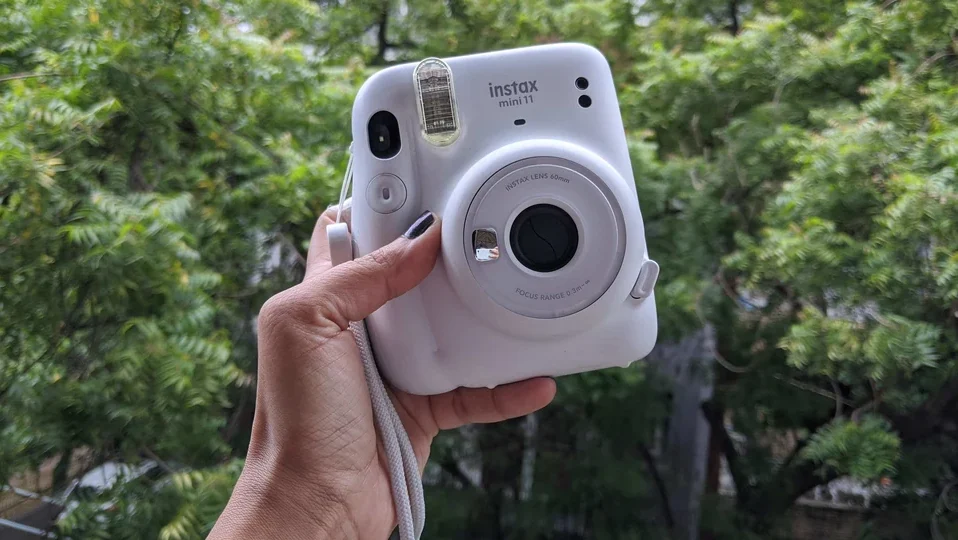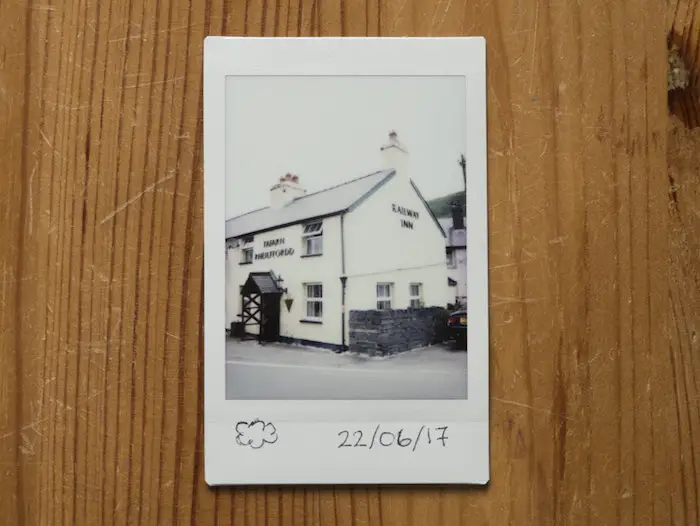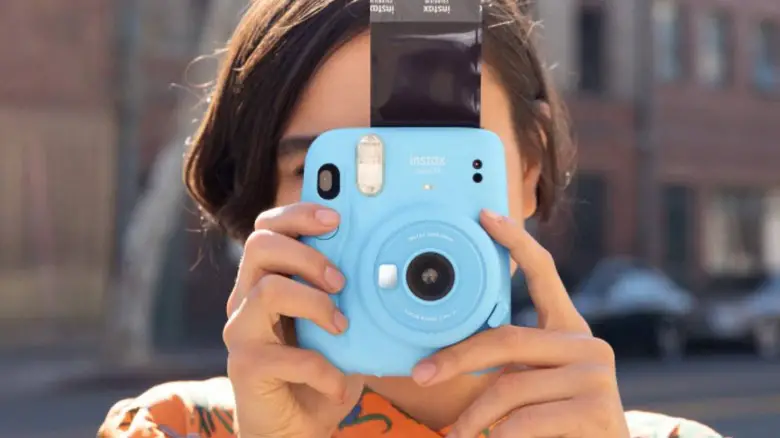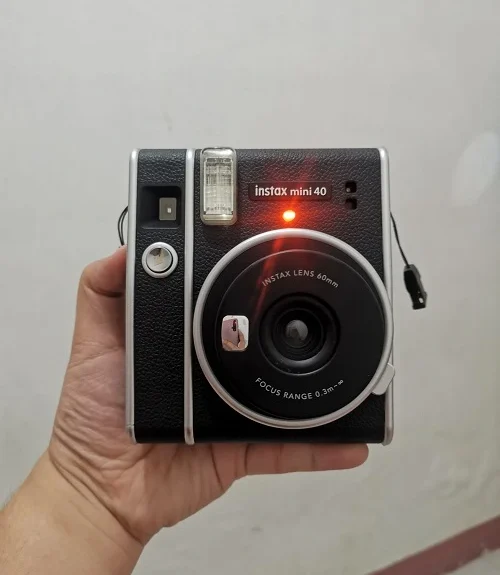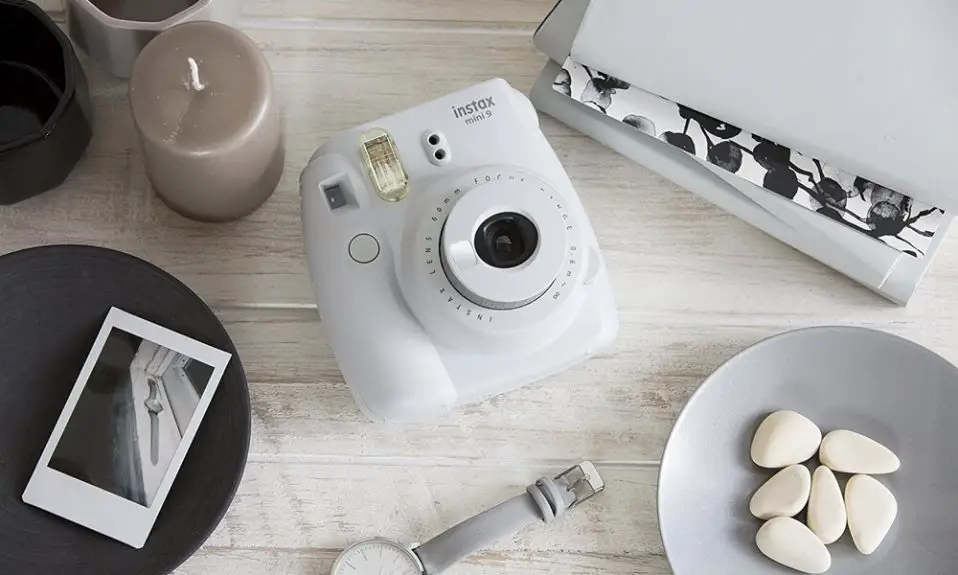I’ve noticed a recurring issue with Instax Mini 11 cameras where owners report their photos turning out white.
As an expert in photography and camera mechanics, I understand this can be frustrating, especially when capturing moments meant to be cherished.
Typically, this problem is attributed to a handful of factors, such as overexposure, low battery power preventing a proper flash, or a dirty lens, which can all interfere with the photo development process.
When using the Instax Mini 11, it’s essential to consider several specifics that could prevent this white photo outcome.
Handling the film correctly is crucial, as is ensuring that the camera’s sensors are not obstructed during use.
Moreover, keeping an eye on the ambient lighting conditions can make a significant difference in the resulting photograph.
Through my analysis and understanding of these cameras, I aim to highlight the ways these common issues can be identified and resolved, allowing for clear, vivid instant photographs to be produced without the white photo error occurring.
Contents
- Understanding the Instax Mini 11 Camera
- Troubleshooting Instax Mini 11 White Photos
- Maintenance and Care
- Advanced Tips and Techniques
- Seeking Further Assistance
- Frequently Asked Questions
- Why are my Polaroid pictures coming out completely white?
- What causes overexposure in Instax Mini 11 photographs?
- How can I fix an Instax Mini 11 camera that’s not developing pictures?
- How do I prevent my instant photos from turning out too bright or white?
- Can film cartridge issues lead to white photos in Instax Mini 11?
- What troubleshooting steps should I take if my Instax Mini 11 prints are blank?
Understanding the Instax Mini 11 Camera
In my experience with instant photography, the Instax Mini 11 stands out for its ease of use and simplicity.
Let me guide you through its key features and some common issues I’ve encountered.
Overview of Instax Mini 11 Features
The Instax Mini 11 instant camera offers several features aimed at enriching the instant photography experience:
- Automatic Exposure: The camera automatically senses the level of ambient light and adjusts the shutter speed and flash output accordingly.
- Built-in Selfie Mode: Pulling out the front edge of the lens switches the camera to Selfie Mode, allowing for close-ups within the 30-50cm range.
- Customizable Design: It comes with two shutter button accessories that can change the look of the camera.
- High-Key Mode: Users can take pictures with a softer impression.
- Simple to Operate: Point-and-shoot functionality is especially user-friendly for beginners.
Common Issues with Instant Cameras
Through my usage of the Instax Mini 11 and similar cameras, several common issues can emerge, particularly related to photo quality:
- Overexposure: Photos may appear white when the camera exposes the film to too much light, which can happen in brightly lit conditions.
- Film Exposure to Light: If the instant film is exposed to light prior to use, such as if the film door is inadvertently opened, the resulting photos can come out completely white.
- Sensor Obstruction: Covering the camera’s light sensors accidentally while taking a photo can also lead to overexposed images.
Being mindful of these common issues can significantly enhance your instant photography experience with the Instax Mini 11 camera.
Troubleshooting Instax Mini 11 White Photos

When Instax Mini 11 photos come out white, it generally indicates an issue with exposure to light or operational errors during the photo-taking process.
In this section, I’ll guide you through a series of checks and balances to identify and solve the problem.
Checking the Camera Exposure Settings
Instax Mini 11 is designed with automatic exposure control, which adjusts the shutter speed and flash output according to the environment’s lighting conditions.
If your photos are consistently turning out white, first ensure you are not obstructing the camera’s light meter or flash.
These sensors are crucial for the camera to determine the correct exposure.
- Do not cover the light sensor with your fingers.
- Make sure nothing is blocking the flash when you take a picture.
Inspecting the Film Cartridge
Improper film loading or exposure to light can damage the film, resulting in white photos.
Confirm if the film cartridge is properly installed and if it’s been exposed to light:
- Check if the film door is properly closed after loading the film.
- Avoid opening the film compartment once a new cartridge is inserted.
Ensure that the black film cover is ejected after you insert the cartridge and that subsequent film exposures are intact and not previously exposed to light.
Assessing the Ejection Process
After a photo is taken, the film should eject and begin developing. If this process is obstructed or malfunctioning, it can cause the photo to appear white.
Here’s how to assess the ejection process:
- Observe if the film is coming out smoothly. Physical obstruction or camera malfunctions could prevent proper film ejection.
- Listen for mechanical anomalies during ejection. Any unusual sounds may indicate an issue that needs professional attention.
By systematically examining these aspects, you should be able to identify the cause of your white photos and take steps to correct the issue.
Maintenance and Care
To ensure your Instax Mini 11 operates flawlessly and produces the best photo quality, I’ll walk you through the essential maintenance and care practices centered on handling and film storage.
Proper Handling and Usage
Handling the Camera:
- Do not touch the lens with your fingers; even small smudges can disrupt photo clarity.
- Use a lint-free cloth to gently clean the lens if necessary.
Taking Photos:
- Before shooting, make sure the light and flash sensors are unobstructed to avoid underexposed photos.
- During operation, avoid opening the film door as this can expose the film to light and ruin it.
Film Storage Tips
Environment:
- Store film packs in a cool, dry place away from direct sunlight and high temperatures.
Handling Film Packs:
- Handle the film by the edges to prevent fingerprints or dust from affecting the photos.
- Once installed in the camera, do not open the back until the film pack is depleted to prevent accidental light exposure.
Advanced Tips and Techniques
In managing the Instax Mini 11, I’ve discovered that adjusting to the lighting and mastering its unique features are pivotal for achieving optimal photo quality.
Optimizing Lighting Conditions
I often remind myself that the Instax Mini 11 lacks exposure controls, a fact that necessitates a keen understanding of the lighting environment. To counteract overexposure:
- Avoid Direct Sunlight: I take care not to shoot in harsh, bright conditions, especially direct sunlight.
- Use Shade Smartly: I find more even lighting under a shade, which can lead to better-exposed photos.
- Indoor Settings: When indoors, I make sure to leverage ambient light from windows, and if needed, additional soft artificial lighting.
To sum it up, I continuously assess the lighting and adjust my position and the camera settings accordingly to ensure my photos are neither over nor underexposed.
Mastering the Selfie Mode
For selfies, the Instax Mini 11 offers a specific mode, which I engage with precision:
- Pull Out the Lens Barrel: I initiate selfie mode by pulling the lens barrel out until the ‘Selfie Mode’ mark appears.
- Frame with the Mirror: There’s a small mirror next to the lens that I use to frame my selfies accurately.
- Mind the Distance: I stay within the 30-50cm range to ensure my selfies are focused and well-composed.
By applying these tips, I can exploit all the creative possibilities the Instax Mini 11 entails, capturing well-lit, sharp selfies that stand out.
Seeking Further Assistance
When troubleshooting fails to resolve the issue of photos coming out white with my Instax Mini 11, I know it’s time to seek further assistance to ensure my camera can function properly again.
Contacting Customer Support
My first step is to get in touch with Fujifilm’s customer support team.
I can find the contact information on the official Fujifilm website or in the documentation provided with my camera.
I prepare a detailed description of the issue, including steps I’ve already taken, to help the support team understand my problem more quickly.
- Communicate the Issue Clearly: I ensure to describe precisely what happens when I take a photo.
- Provide Serial Number: I have my camera’s serial number handy for a faster service request.
Utilizing Warranty Service
If my Instax Mini 11 is still under warranty, I take advantage of the warranty service.
- Proof of Purchase: I keep my receipt or proof of purchase ready.
- Check Warranty Terms: I review the warranty terms to confirm that my issue is covered.
By following these specific steps, I can access professional assistance and potentially get my camera repaired or replaced under warranty.
Frequently Asked Questions
In my experience with the Instax Mini 11, I’ve identified several reasons for photos coming out white and explored a variety of fixes. Here, I address common questions about this issue.
Why are my Polaroid pictures coming out completely white?
If your Polaroid pictures are completely white, it’s usually due to the film being overexposed to light. This can happen if the film is exposed to light while loading or if a picture is taken in overly bright conditions.
What causes overexposure in Instax Mini 11 photographs?
Overexposure in Instax Mini 11 photographs often occurs when the camera’s light sensor misreads the brightness of the environment, leading to too much light hitting the film during exposure.
How can I fix an Instax Mini 11 camera that’s not developing pictures?
When the Instax Mini 11 isn’t developing pictures, it could be due to a malfunctioning film pack or roller issues inside the camera. Check the film pack and make sure it’s loaded correctly, and inspect the rollers for any obstructions or damage.
How do I prevent my instant photos from turning out too bright or white?
To prevent instant photos from turning out too bright, avoid direct sunlight when taking pictures, and make sure not to block the camera’s light sensor with your fingers.
Can film cartridge issues lead to white photos in Instax Mini 11?
Yes, film cartridge issues like exposure to light when loading, or a defect can lead to white photos in an Instax Mini 11. Always load the film in a dimly lit environment and check for cartridge integrity.
What troubleshooting steps should I take if my Instax Mini 11 prints are blank?
If your Instax Mini 11 prints are blank, start by ensuring the camera’s film door has not been inadvertently opened post-loading. Check the film’s expiration date and inspect the camera for any error indications before attempting another shot.

